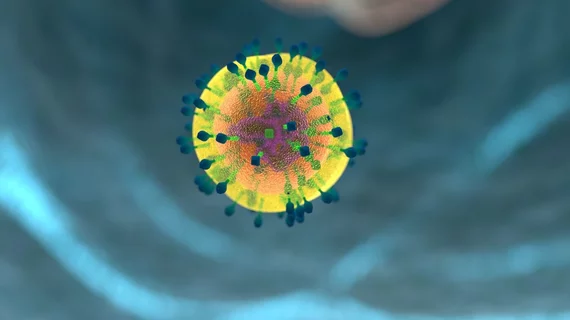New CT scoring criteria can shorten time to diagnosis, treatment of COVID-19
An updated version of CT scoring criteria that incorporates new information associated with COVID-19 pneumonia helps clinicians make a timelier diagnosis and can result in better outcomes for patients with the disease.
That’s the takeaway of a new study published in the American Journal of Roentgenology, which assigned scores to a small number of individuals based on their CT abnormalities. Using this new system—that accounts for lung lobe involvement and CT changes of coronavirus pneumonia—researchers were able to more accurately track developments in disease progression.
“Timely diagnosis and treatment are key in improving the prognosis for patients with COVID-19,” Guoquan Huang, with Wuhu Second People’s Hospital in China, and colleagues said in the study. “The earlier that COVID-19 is diagnosed and treated, the shorter the time to disease resolution and the lower the highest and last CT scores are,” they added.
For their study, the team enrolled 25 patients with reverse transcription–polymerase chain-reaction-confirmed coronavirus to receive chest CT exams. Computed tomography scores ranged from 0 (no lung lobe involvement) to 25 (maximum involvement) and also incorporated changes in imaging findings, such as ground-glass opacities, crazy-paving pattern, and consolidation.
Using these scores, Huang et al. recorded the time from patients’ initial symptoms to their diagnosis and treatment. Each patient with the new virus was put into one of two groups: those who experienced symptoms and were then diagnosed in three days or less, and patients whose diagnosis and treatment took longer than that.
After looking at the variation between the cohorts, the authors reported that group 1 (3 days or less) had estimated peak CT scores of 10, while the other groups’ high-point score was 16. The recovery time for both patient pools also proved to differ, with those in group 1 recovering in 6 days compared to 13 days for patients who were diagnosed later.
“The last CT score tends to be lower and the duration of hospitalization shorter for patients for whom the time from symptom onset to diagnosis and treatment was 3 days or less versus those for whom it was more than 3 days, and these differences were statistically significant,” Huang and colleagues pointed out.
Bringing in important information from differences in CT features makes all the difference, according to the researchers, and enables qualitative understanding of changes in COVID-19 infection during treatment, they added.
“Our results indicate that among patients with COVID-19 who received early treatment, the disease would reach the absorption stage in a shorter amount of time, and these patients would have highest and last CT scores that were lower than those of patients who received treatment later after onset of symptoms,” Huang and colleagues wrote in the study. “In other words, timely treatment of COVID-19 is vital if patients are to have a better prognosis, although symptomatic and supportive treatments have been the primary medical approaches used to date,” they concluded.

